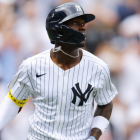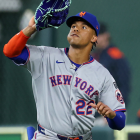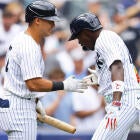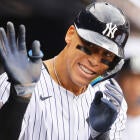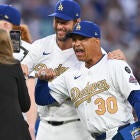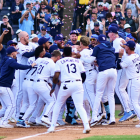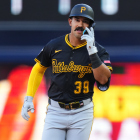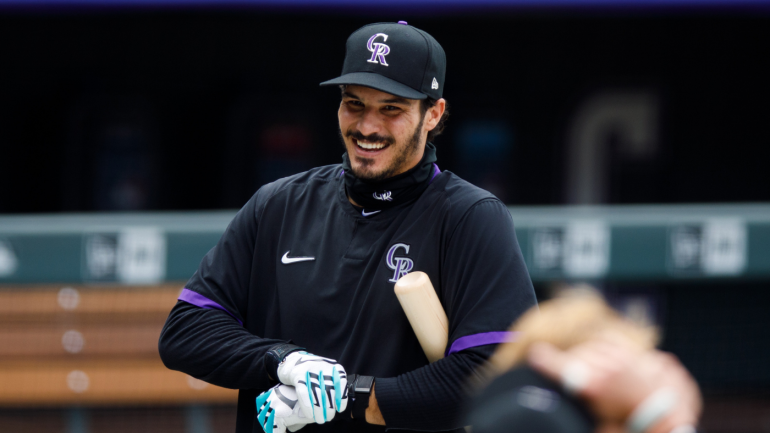
On Monday, the Cardinals and Colorado Rockies finalized a trade that sends five-time All-Star third baseman Nolan Arenado to St. Louis. The deal is the culmination of a year-long rumor cycle involving Arenado, who had lost faith in Rockies general manager Jeff Bridich, as well as Bridich's vision for the organization.
For as disillusioned as Arenado had become with the Rockies, he should receive a hero's welcome in St. Louis. The Cardinals came up short in their pursuit of Francisco Lindor earlier this winter, yet were nonetheless able to recover and land a prime-aged superstar to plop down on the left side of their infield. Arenado's contract and ability to opt-out does complicate matters, but it's hard to fret about the worst-case scenarios here given how little the Cardinals gave up to get a deal done.
We at CBS Sports are nothing if not the judgmental type. As such, we've decided to offer grades for both parties involved in the Arenado blockbuster below. First, though, let's recap the terms of the agreement:
- Rockies trade: 3B Nolan Arenado, approximately $51 million
- Cardinals trade: LHP Austin Gomber, INF Mateo Gil, INF Elehuris Montero, RHP Tony Locey, and RHP Jake Sommers
Cardinals grade: A
The Cardinals had been after Arenado for years. The asks then were substantially -- substantially -- higher than what the Cardinals gave up here. No matter what happens with Arenado over the long-term, this looks like a heck of a move -- one that positions the Cardinals as the top dogs in the National League Central, even if they aren't yet on the same level as the Los Angeles Dodgers or San Diego Padres.
Arenado is coming off a rough season, in which he hit .253/.303/.434 (84 OPS+) in 48 games. It's hard to get too worked up about that for the following reasons: 1) it was 48 games; 2) during a pandemic year, and with a team he disliked; and 3) from a 29-year-old with more than 1,000 prior games suggesting he's really good.
Provided Arenado gets back on track in 2021, then it's fair to wonder what the future holds for him in St. Louis. As part of the deal, he not only retained his opt out after 2021, but gained an additional opt out after 2022, as well as another year (and $15 million) tacked on if he doesn't opt out. Arenado and his agent will have to decide if he can beat $179 million and then $144 million in each of those winters.
Regardless of how Arenado's camp answers, the Cardinals should be able to make a real run at retaining him. They have Paul Goldschmidt and Miles Mikolas on the books for a while, and they have to be mindful of Jack Flaherty's arbitration raises and eventual free agency. Otherwise? The Cardinals are going to be shedding money.
Andrew Miller's and Dexter Fowler's deals are both up at year's end (a combined $28.5 million) and the Cardinals could also free themselves from Matt Carpenter and Carlos Martinez's contracts if they so choose (another $30ish million, before buyouts). Obviously the Cardinals will have to use some of that money to replace those players, but Arenado is the kind of star you're OK with pouring resources into.
This looks like both a short- and long-term play for the Cardinals. And it's a dang good one.
Rockies grade: F
It's hard to spin this one as a positive for the Rockies. They're spending more than $50 million regardless of where Arenado is in 2022, without receiving a legitimate headliner in return, and they're doing all of that because Bridich was adamant that Arenado's contract included an opt-out clause after 2021. Woof.
The best-case scenario here is that the Rockies find a way to use their savings (nearly $150 million) to lock in Trevor Story beyond this season. The belief in the industry right now is that Story is unlikely to hang around. Why would he? He's months away from hitting the open market, and he just had a front-row seat for the Arenado implosion. If the Rockies were winning, or had a real chance at winning anytime soon, maybe Story could be convinced. Otherwise, why bother?
As for the return itself, it's not great.
Gomber is a well-constructed southpaw (6-foot-5, 220 pounds) who has heretofore split his big-league career between starting (15 appearances) and relieving (28). Last season, he amassed a pretty 1.86 ERA in 29 innings, though his strikeout-to-walk ratio was a frightful 1.80. Gomber uses a vertical arm action to achieve a high three-quarters release point that is one of the steepest in the league.
The Rockies probably envision Gomber as a No. 4 starter type. There's a decent chance he ends up in their bullpen long-term because of either his health or his performance. He's thrown more than 160 innings once in his pro career, and he missed time in 2019 because of shoulder and biceps issues. As for the pitching side of things, Gomber's arsenal largely consists of a low-90s heater, a curveball, and a slider. It's unclear if the curve will retain its effectiveness at a higher altitude.
When Montero played in 2019, he did so primarily at Double-A, where he struggled to a .552 OPS and a 31 percent strikeout rate. Now 22, Montero will have to find a way to make more consistent contact; work deeper counters; and tap into his raw power more frequently, because he's no sure thing to remain at the hot corner for the long haul.
Remember Benji Gil? Mateo is his son. The younger Gil has appeared in just two games above rookie ball since being plucked in the third round in 2018. The progress of his bat will dictate whether he's just a spare infielder.
Locey has a starter's frame (6-foot-3, 239 pounds), but not a starter's control: he walked more than 13 percent of the batters he faced between college and the minors in 2019. If the Rockies can't help Locey throw more strikes (or develop a third pitch), he could become an effective reliever behind a power fastball-slider combination.
![[object Object] Logo](https://sportshub.cbsistatic.com/i/2020/04/22/e9ceb731-8b3f-4c60-98fe-090ab66a2997/screen-shot-2020-04-22-at-11-04-56-am.png)









